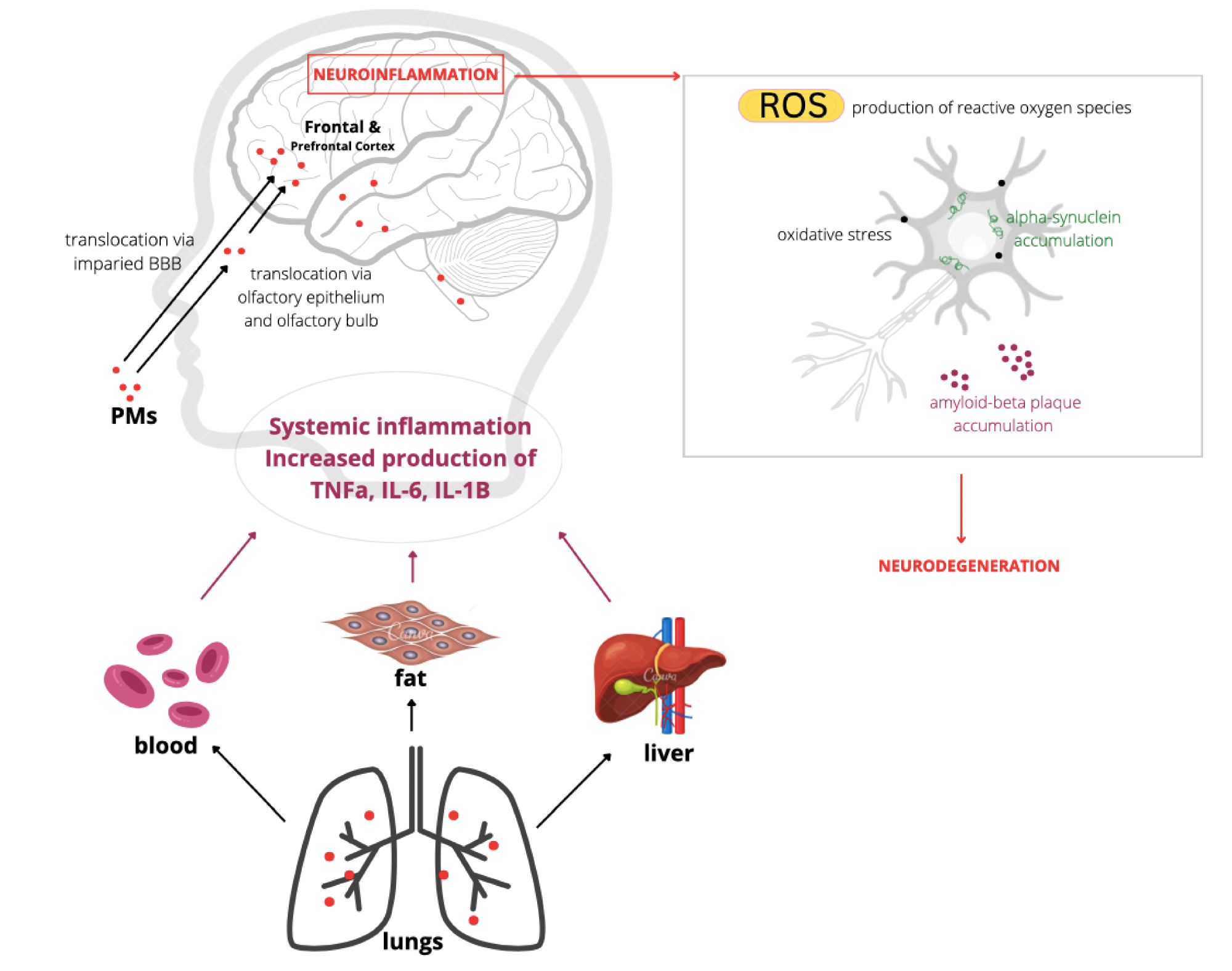An article published in the journal Toxics describes how air pollutants adversely impact the human nervous system.
 Study: Neuroinflammation and Neurodegeneration of the Central Nervous System from Air Pollutants: A Scoping Review. Image Credit: Hung Chung Chih / Shutterstock
Study: Neuroinflammation and Neurodegeneration of the Central Nervous System from Air Pollutants: A Scoping Review. Image Credit: Hung Chung Chih / Shutterstock
Impact of pollutants on the nervous system
Neurotoxicants are chemicals capable of inducing adverse side effects in the nervous system during development. Neurotoxicants could be of different types, including industrial chemicals, pesticides, organic solvents, and pharmaceuticals. It has been estimated that about 30% of commercially used chemicals have neurotoxic effects.
Neurotoxicants negatively impact various physiological processes, including cell growth and migration. The impact is highest in the developing brain of infants and children. Various brain disorders associated with neurotoxicant exposure include mental and cognitive developmental disorders, attention deficit hyperactivity disorder, and autism spectrum disorder.
Emission and combustion pollutants create various airborne small particles. Particulate matter (PM) emitted by vehicles, industrial plants, power plants, and residential air conditioning systems remains indoors and outdoors and acts as neurotoxicants. Such air pollutants primarily work by inducing inflammatory responses, leading to the generation of free radicals and subsequent tissue damage and neurodegeneration.
Heavy metals such as arsenic, cadmium, lead, and mercury are present in food, water, and other products. These metals are highly toxic and capable of causing respiratory, digestive, and neurodevelopmental disorders.
 Example of mechanisms of action leading to developmental neurotoxicity from inhalation of particulate matter. Note: TNFa, tumor necrosis factor alpha; IL-6, interleukin-6; IL-1B, interleukin-1 beta; BBB, blood–brain barrier; ROS, reactive oxygen species.
Example of mechanisms of action leading to developmental neurotoxicity from inhalation of particulate matter. Note: TNFa, tumor necrosis factor alpha; IL-6, interleukin-6; IL-1B, interleukin-1 beta; BBB, blood–brain barrier; ROS, reactive oxygen species.
Air pollution
Air pollution is caused by combinations of solid and liquid particles, including ozone, sulfur dioxide, carbon monoxide, nitrogen oxides, polycyclic aromatic hydrocarbons, and heavy metals. These pollutants are collectively considered PM, which are exponentially increasing in the environment due to urbanization and industrialization.
PM of 2.5 µM in diameter (PM2.5) is considered to have a major impact on pollution-related mortality worldwide. According to the World Health Organization (WHO), about 91% of pollution in low- or middle-income countries is associated with outdoor air pollution. About 4.2 million premature deaths occur worldwide due to air pollution, with cancer being the major contributor. Because of this reason, PM is considered a carcinogen.
Health impacts of air pollutants
Studies conducted using animal models demonstrate that exposure to PM during pregnancy and 4-7 days after birth can lead to developmental neurotoxicity, including motor and cognitive impairment, memory and spatial learning difficulties, and neuropsychological disorders. Similar neurotoxic effects have been observed following exposure to diesel engine exhaust fumes.
Air pollutants enter the body through inhalation or ingestion. PM2.5 can easily translocate to the lower respiratory tract and cause respiratory disorders. It can also translocate from the lungs to the blood and, thus, can reach any organs in the body via the circulatory system.
PM2.5 enters the brain via the olfactory epithelium and olfactory bulb or via the disrupted blood-brain barrier. Upon entry, it induces neuroinflammation, followed by free radical production, oxidative protein damage, accumulation of abnormal protein aggregates, and induction of neurodegeneration. Alzheimer's disease and Parkinson's disease are the two most common types of neurodegenerative diseases associated with neurotoxicant exposure.
Neuro-apoptosis or neuronal cell death is another potential cause of neurodegenerative disease. In this context, evidence has shown that exposure to PM2.5 induces mitochondrial damage and neuronal cell death. In addition, in-utero exposure to PM during early pregnancy has been found to reduce the telomere length in the fetus's umbilical cord blood.
Children are more susceptible to pollutant-induced neurotoxicity as they absorb more water and air per unit of body size than adults. Besides neuroinflammation, exposure to air pollutants causes inflammation in the respiratory and gastrointestinal systems. Exposure to PM2.5 has been found to be associated with various diseases, including inflammatory bowel syndrome and cancer. It has also been observed that children living in megacities are at higher risk of developing Alzheimer's disease and Parkinson's disease due to excessive exposure to neurotoxicants.
Children in urban industrialized regions are more susceptible to developing cognitive disorders and autism spectrum disorder. Exposure to neurotoxicants has been found to significantly affect school-going children's memory, verbal, and non-verbal skills. In-utero exposure to traffic-related pollutants and other neurotoxicants has been found to increase the risk of autism spectrum disorder.
Magnetic resonance imaging (MRI) studies have shown that children exposed to air pollutants exhibit prefrontal white matter hyperintensity, a medical condition associated with cognitive and behavioral deficits, dementia, stroke, and even death.
Measures to be taken to control air pollution
Several control measures implemented during the coronavirus disease 2019 (COVID-19) pandemic, such as local and national lockdowns and movement restrictions, have significantly reduced air pollution worldwide. This indicates that switching from motorized transportation (cars, motorcycles, and buses) to active transportation (walking and cycling) can significantly reduce air pollution.
Community-level initiatives and possible pharmacological and dietary intervention trials should be introduced to manage air pollution and related toxicities better.